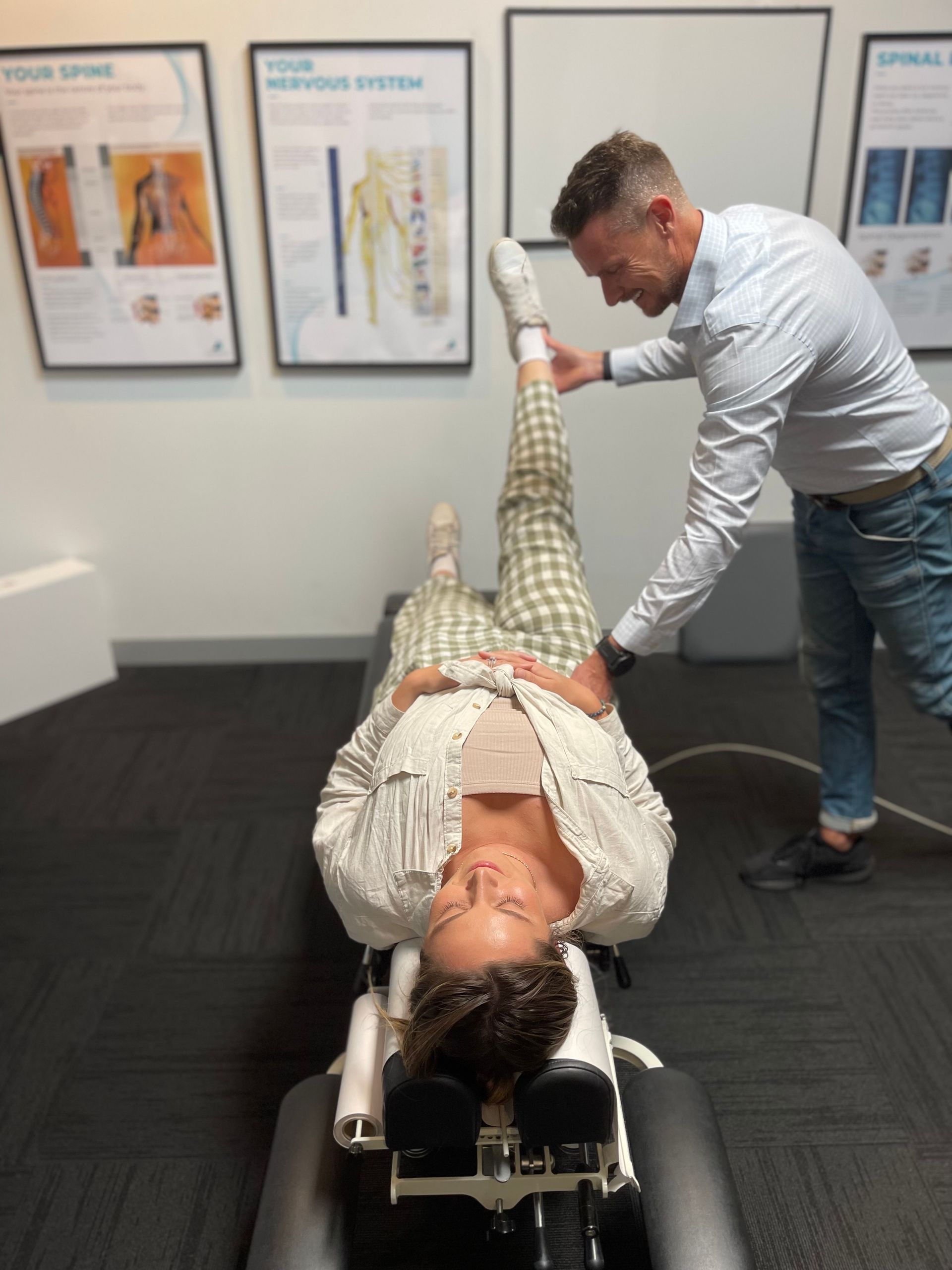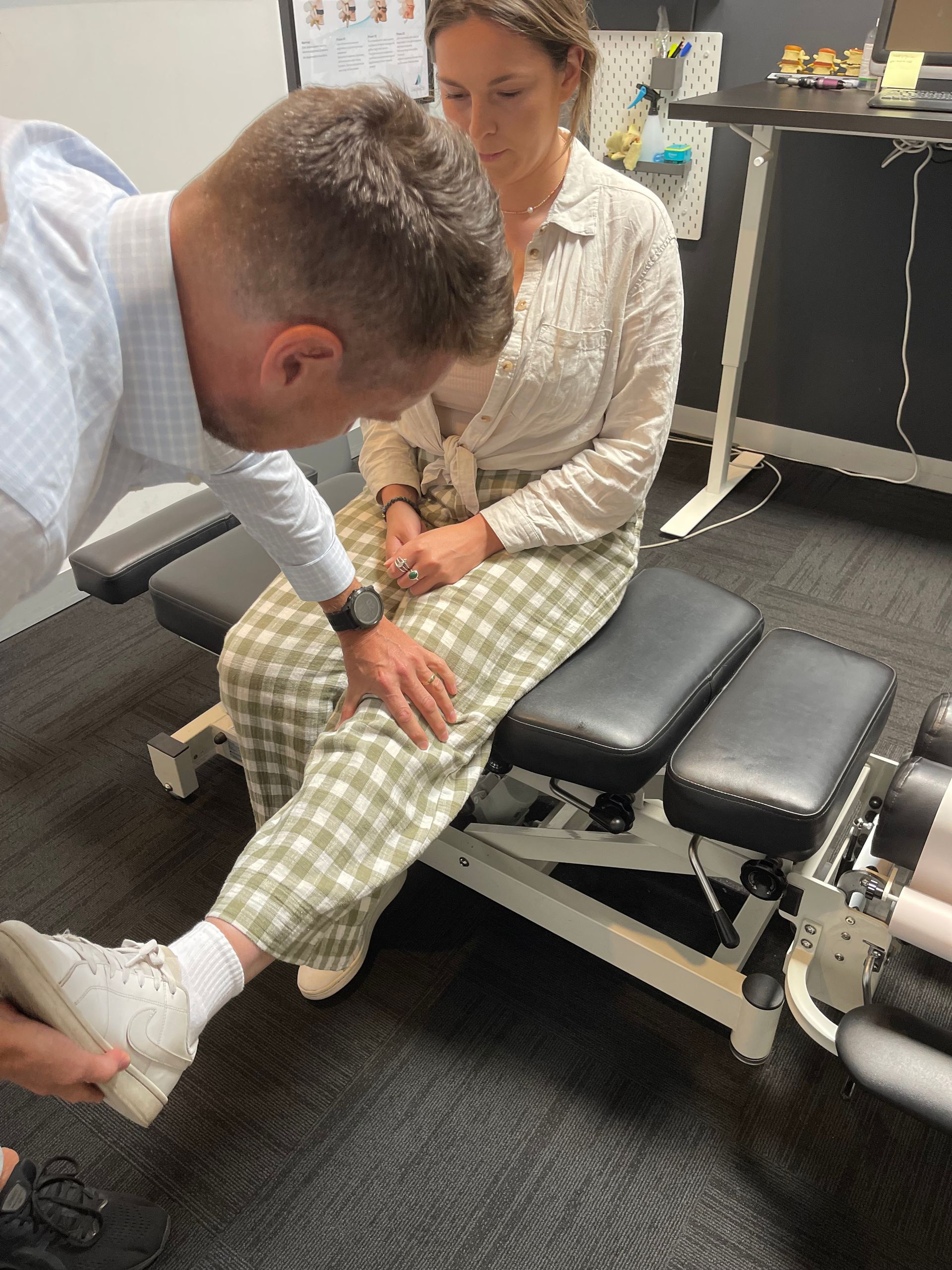Is It Better To See A Physiotherapist Or Chiropractor For Sciatica
When it comes to seeking treatment, many people are faced with the question of whether is it better to see a physiotherapist or chiropractor for sciatica.
As someone who has personally experienced the debilitating pain and discomfort of sciatica, I understand the importance of finding the right treatment that not only provides relief but also promotes long-term healing.
In this article, we will explore the different aspects of both physiotherapy and chiropractic care in order to determine which option may be more effective in addressing the symptoms of sciatica.
Sciatica is a condition characterized by pain that radiates along the path of the sciatic nerve, which runs from the lower back through the hips and down each leg. The symptoms can vary from mild to severe and may include sharp shooting pain, numbness, tingling, or weakness in the affected leg. While both physiotherapy and chiropractic care aim to alleviate these symptoms, they do so through different approaches.
Physiotherapists focus on using therapeutic exercises and techniques to improve mobility, strengthen muscles, and reduce inflammation.
On the other hand, chiropractors primarily use spinal adjustments and manipulations to correct misalignments in the spine that may be contributing to sciatic nerve irritation.
By understanding these distinctions between physiotherapy and chiropractic care, we can make an informed decision about which treatment option may be better suited for our individual needs.
Physiotherapist Or Chiropractor
Should you see a chiropractor or physiotherapist for sciatica? Let's explore your options to find the best relief.
Physiotherapists and chiropractors treat sciatica differently. Which is better depends on personal preference, symptom severity, and needs.
Sciatica assessment and treatment are physiotherapists' specialties. They use targeted exercises and manual therapy to improve mobility, function, and quality of life. Sciatica physiotherapy may include stretching, strengthening, massage, or joint mobilization to reduce pain.
Therapists treat sciatica symptoms and causes holistically, which is a benefit. However, chiropractors use spinal manipulation and adjustment to realign the spine. They think spine misalignments cause nerve irritation and sciatica. Chiropractic sciatica treatments reduce nerve pressure and improve spinal function with spinal adjustments. Chiropractors may also use heat or ice therapy, electrical stimulation, and rehabilitative exercises.
Individual circumstances determine whether physiotherapy or chiropractic is best for sciatica. If you prefer a more hands-on approach with customized therapeutic exercise programs and manual therapy, a physiotherapist may be right for you. However, if you think spinal misalignment is a major factor in your condition and prefer spinal manipulations, a chiropractor may be better. To find the best solution for your needs, consult both professionals.
Conditions And Symptoms

To find the best back pain treatment, consider all your symptoms and conditions. Understanding sciatica's symptoms and conditions is crucial.
Compression or irritation of the sciatic nerve causes sciatica. The sciatic nerve runs from the lower back to the buttocks and legs. Herniated discs, spinal stenosis, and piriformis syndrome can cause sciatica. Each of these conditions has symptoms that vary in severity. To help you understand, here are four sciatica symptoms:
- Sharp shooting pain: A hallmark symptom of sciatica is a sharp, shooting pain that radiates from the lower back down through one leg. This pain can be intense and debilitating.
- Numbness or tingling: Alongside the pain, many individuals also experience numbness or tingling sensations in their buttocks, legs, or feet. This occurs due to spinal nerve compression.
- Muscle weakness: If your sciatic nerve is compressed for an extended period, it can lead to muscle weakness in your affected leg. This weakness may make it difficult to walk or perform daily activities.
- Loss of bladder control: In severe cases where there is significant nerve compression, loss of bladder control may occur as a result.
Understanding these conditions and symptoms helps you decide whether a chiropractor or physiotherapist would be best for your sciatica. Let's discuss how chiropractic care and physiotherapy can help with these issues in the next section about treatment options.
Treatment Options
Let's explore back pain relief options. Sciatica treatment often involves physical therapy and chiropractic care.
Physical therapists treat musculoskeletal conditions like sciatica. They treat symptoms and improve function with exercises, stretches, and manual therapy. But chiropractors use spinal manipulation to correct spine misalignments that cause nerve compression and sciatica. The hands-on approach relieves pain and promotes healing by restoring spine alignment and mobility. Chiropractic care often incorporates massage and electrical stimulation.
Chiropractic and physical therapy can treat sciatica, but the best choice depends on your needs and preferences. Physical therapy addresses both symptoms and underlying causes or imbalances for a more holistic approach. Targeted spinal adjustments may provide faster relief in chiropractic care.
Finding A Specialist

Imagine seeing a nerve-related specialist to help you choose the best back pain treatment. Consult a sciatica specialist, like a physiotherapist or chiropractor. These experts have extensive experience diagnosing and treating nervous system disorders like sciatica.
Look for a specialist using these methods:
- Ask for recommendations: Talk to your primary care physician or other healthcare professionals who may be able to refer you to a trusted physiotherapist or chiropractor. They can provide valuable insights based on their knowledge of your specific condition.
- Research online: Utilize search engines and review websites to find specialists in your area who specialize in treating sciatica. Read reviews from previous patients to get an idea of their expertise and patient satisfaction.
- Check credentials: Ensure that the specialist you choose is licensed and certified by relevant professional organizations. Look for additional certifications or advanced training specifically related to sciatica treatment.
Finding the right sciatica specialist is crucial because they'll determine the best treatment. A knowledgeable healthcare provider can discuss the benefits of physiotherapy and how it may help relieve your symptoms.
Physiotherapy Benefits
Discover how physiotherapy can relieve back pain and improve your health. A qualified physiotherapist can help you with sciatica, a common nerve pain condition.
Specialists in sciatica diagnosis and treatment are physiotherapists. They treat the root causes of your pain and restore function and mobility using various methods.
Physiotherapists can customize sciatica treatment plans, which is a major benefit. Unlike other healthcare professionals, physiotherapists treat the cause of your condition as well as your symptoms. Joint mobilizations and soft tissue release can reduce nerve pressure and inflammation.
Physiotherapists also provide personalized exercise programs. These exercises strengthen weak muscles, improve flexibility, and correct imbalances that cause sciatica. Following these exercises under physiotherapist supervision can provide long-term relief and prevent relapses.
Physiotherapy also teaches sciatica self-management. A good physiotherapist will teach you proper posture, ergonomic modifications at work or home, and acute pain management. Understanding your condition empowers you to manage it yourself. Professional physiotherapy for sciatica offers many benefits, including customized manual therapy and exercise programs to treat the root cause of your condition. Learning self-management strategies lets you actively manage your health.
Chiropractic Benefits

Explore chiropractic care for sciatica to improve your health and relieve back pain. Chiropractic care treats sciatica holistically by aligning the spine and nervous system. Chiropractic care for sciatica has four main benefits:
- Natural Pain Relief: A skilled chiropractor can provide targeted adjustments to relieve pressure on the sciatic nerve, reducing inflammation and alleviating pain. By addressing the root cause of your symptoms, chiropractic care aims to provide long-term relief without relying on medication or invasive procedures.
- Improved Mobility: Sciatica can severely limit your mobility and make everyday activities challenging. Through spinal adjustments and other techniques, a chiropractor can help restore proper movement in your spine and joints. Improved mobility not only reduces pain but also allows you to engage in physical activities that promote healing.
- Addressing Underlying Causes: Chiropractors take a comprehensive approach to treat sciatica by identifying any underlying issues contributing to your condition. They may assess factors such as posture, muscle imbalances, or disc bulges that could be putting pressure on the sciatic nerve. By addressing these underlying causes, chiropractic care aims to prevent future flare-ups.
- Holistic Approach: Chiropractors understand that effective treatment involves more than just relieving immediate symptoms; it requires improving overall health and well-being. In addition to spinal adjustments, they may recommend exercises, stretches, lifestyle modifications, or nutritional advice tailored specifically for individuals with sciatica symptoms.
Joint Health
Joint health is essential for overall health and preventing mobility and discomfort issues. Physiotherapists and chiropractors can improve joint health, whether you see them for sciatica or not.
Physiotherapists specialize in movement and exercise therapy to improve joint flexibility, strength, and stability. They improve joint health with stretching, manual therapy, and targeted muscle strengthening. The physiotherapist addresses muscle imbalances or weaknesses that may cause joint problems. Physiotherapy can reduce sciatica pain and joint stress by strengthening local muscles.
Chiropractors use spinal adjustments to realign and function joints. Their main focus is spinal adjustments to optimize joint function. Chiropractors correct misalignments or restrictions by applying controlled force to specific areas of the spine. Chiropractic care relieves sciatic nerve irritation by realigning nerves.
When treating sciatica, physiotherapists and chiropractors can improve joint health. Physiotherapy emphasizes exercise and muscle strengthening, while chiropractic care adjusts the spine. Your preferences and needs may dictate which method is best. Before choosing a treatment, consult both professionals.
Therapy Approaches

Physiotherapists and chiropractors treat sciatica differently to improve joint health and reduce pain. Three novel therapies can transform your pain relief journey:
- Manual Adjustments: Chiropractic care focuses on manual adjustments to the spine and other joints in the body. These adjustments aim to restore proper spinal alignment, relieve pressure on the nerves, and reduce inflammation. By targeting specific areas of concern, chiropractors can help improve joint mobility and decrease pain associated with sciatica.
- Exercise Therapy: Physiotherapy takes a holistic approach to treating sciatica by incorporating exercise therapy into the treatment plan. Physiotherapists design personalized exercise programs that target weak muscles, improve flexibility, and enhance overall strength. These exercises not only provide relief from sciatic pain but also promote long-term joint health by addressing underlying issues.
- Soft Tissue Techniques: Both chiropractors and physiotherapists use soft tissue techniques such as massage or myofascial release to relieve tension in muscles surrounding the affected area. By releasing tightness and improving blood flow, these techniques can help reduce inflammation and alleviate sciatic nerve compression.
Understanding these chiropractic and physiotherapy treatments can help you choose the best one for your sciatica symptoms.
Physio Vs. Chiro
Is it better to see a physiotherapist or chiropractor for sciatica? Explore the differences between physiotherapy and chiropractic care to determine which therapy suits your needs. Both chiropractors and physiotherapists treat sciatica, but differently.
Chiropractic care relies on spinal adjustments to relieve nerve pressure, while physiotherapy uses exercises and stretches to improve mobility and reduce pain. To choose a sciatic pain treatment, you must understand these differences.
Manual spine adjustments are common in sciatica chiropractic treatment. Correcting nerve impingement-causing misalignments or subluxations is the goal. These adjustments reduce inflammation and nerve pressure, providing immediate relief. Chiropractors may also use traction or massage to reduce pain. Chiropractic care may be right for you if you prefer a hands-on approach and want quick sciatica relief.
However, physiotherapy treats sciatica more holistically. Rather than just manipulating the spine, physiotherapists use targeted exercises and stretches to treat the cause. They improve sciatic pain by increasing flexibility, strengthening spine-supporting muscles, and correcting postural imbalances. Physiotherapy may use ultrasound or electrical stimulation to reduce inflammation and promote healing. If you prefer a holistic approach that emphasizes long-term rehabilitation over symptom relief, a physiotherapist can help.
Choose between chiropractic and physiotherapy for sciatica treatment based on whether you want immediate relief from spinal adjustments or a more comprehensive approach focusing on exercises and rehabilitation. Both methods have benefits, but your preferences and treatment goals really matter.
Visiting A Physio

Imagine the relief you'll feel when you enter a physiotherapist's office to manage your sciatic pain and begin healing and rehabilitation.
The holistic approach to sciatica treatment by physiotherapists was my first impression. In addition to relieving my pain, they sought to diagnose my condition. This holistic approach gave me confidence in my care.
The physiotherapist assessed me to determine the severity of my sciatica and how it affected my daily life. I felt heard and understood when they asked detailed questions about my symptoms and medical history. My physiotherapist then customized my treatment. The treatment included manual therapy, targeted exercises, and lifestyle changes.
I liked how physiotherapists taught patients self-management and knowledge. They showed me how certain movements and postures could aggravate my sciatica and gave me home exercises to relieve the pain. They also suggested ergonomic changes to my workplace and daily routine to reduce back strain.
Visiting A Chiropractor
I became intrigued by chiropractic care as I searched for relief from the debilitating pain. I decided to try a chiropractor after researching and talking to others with similar issues.
Here are four reasons I liked this option:
- Holistic Approach: Chiropractic care focuses on treating the whole body rather than just addressing the symptoms. I appreciated that chiropractors consider how different parts of the body are interconnected and aim to improve overall health and well-being.
- Specialized Expertise: Chiropractors undergo extensive training specifically related to spinal health and nervous system function. Their expertise in diagnosing and treating conditions like sciatica made me feel confident in their ability to provide targeted care for my specific needs.
- Non-Invasive Techniques: One aspect of chiropractic care that stood out to me was its emphasis on non-invasive techniques. Unlike some other treatment options, such as surgery or medication, chiropractors use manual adjustments and manipulations to alleviate sciatic pain without relying on invasive procedures.
- Personalized Care: During my initial consultation with a chiropractor, I felt heard and understood. They took the time to assess my condition thoroughly before creating a personalized treatment plan tailored to address my unique needs and concerns.
Therapeutic Techniques

Discover how therapeutic techniques can relieve your suffering. Chiropractic care for sciatica uses several methods to treat the cause. These techniques realign the spine and improve joint mobility to relieve sciatic nerve pressure.
Chiropractic treatment targets specific dysfunctions to restore balance and function.
Spinal manipulation is a common chiropractic treatment. This helps stiff joints move and function by applying controlled force. Chiropractors reduce inflammation and nerve compression to relieve sciatica symptoms with precise adjustments.
In addition to spinal manipulation, chiropractors may use mobilization, soft tissue therapy, and customized exercises. Gentle joint and muscle mobilization improve range of motion and flexibility. Soft tissue therapy relieves muscle tension through massage or manual therapy. Combining these methods can correct muscle imbalances and speed healing.
Many chiropractic patients have seen sciatica symptoms improve with these therapies. However, each person's experience depends on their condition and treatment response. Thus, personalized sciatica treatment requires consulting a qualified chiropractor.
Symptom Management
You can use non-medication, non-invasive methods to treat sciatica. Chiropractic and physiotherapy treatments include these methods. Four innovative sciatica treatments from chiropractors and physiotherapists:
Spinal adjustments: Chiropractic care focuses on correcting misalignments in the spine that may be contributing to sciatic nerve compression. Through gentle manipulations, chiropractors aim to reduce inflammation and relieve pressure on the affected nerve.
- Therapeutic exercises: Physiotherapists often prescribe specific exercises to strengthen the muscles around the lower back and core. By improving stability and flexibility, these exercises help support the spine and reduce pain associated with sciatica.
- Manual therapy: Both chiropractors and physiotherapists can use manual therapy techniques such as massage or soft tissue mobilization to relax tense muscles, improve blood flow, and promote healing. This hands-on approach can provide immediate relief from pain.
- Postural correction: Poor posture is a common contributor to sciatic nerve irritation. Chiropractors and physiotherapists can assess your posture and provide guidance on how to maintain proper alignment during daily activities. Making small adjustments in your posture can have a significant impact on symptom management.
You can actively manage sciatica symptoms with a chiropractor or physiotherapist using these non-medication methods. However, choosing the right treatment path that matches your preferences and recovery goals is crucial.
Choosing The Right Treatment

Choose the best sciatica treatment based on your preferences and recovery goals. Chiropractic and physiotherapy treatments are effective, but choosing the right one is crucial.
If you want immediate relief and a hands-on approach, a chiropractor may be best. They specialize in sciatic nerve-relieving spinal adjustments.
However, if you prefer a holistic approach that emphasizes body strength and rehabilitation, a physiotherapist may be best. Physiotherapists specialize in exercise and movement therapy. They will diagnose your sciatica, find its causes, and create a customized treatment plan. Exercises to improve flexibility, strengthen spine-supporting muscles, and correct imbalances or postural issues may help your symptoms. Physiotherapy improves strength and mobility to manage sciatica long-term.
Consider your goals when choosing a physiotherapist or chiropractor for sciatica treatment. Do you want immediate pain relief or long-term management? Both professionals can relieve symptoms differently, but their methods differ greatly. Unlike physiotherapists, chiropractors may provide temporary relief through spinal adjustments but may not treat the root cause.
Consider personal preferences and recovery goals when choosing a physiotherapist or chiropractor for sciatica treatment. Consider whether you want immediate pain relief or long-term management of sciatic nerve compression. Understand these factors and decide what you want from treatment—quick pain relief or comprehensive rehabilitation—to make an informed decision that meets your needs.
Alternative Therapies
If you're open to trying other sciatica treatments, alternative therapies can be helpful. Chiropractic care and physiotherapy treat sciatica well, but alternative therapies may improve your overall health.
Common sciatica treatments include acupuncture. In this ancient Chinese practice, acupuncture practitioners insert thin needles into specific body points to promote healing and relieve pain. Acupuncture reduces inflammation and increases blood flow, relieving sciatic nerve pain, according to research. Many people find acupuncture relaxing and therapeutic, relieving stress and physical pain.
Alternative therapies include yoga and other gentle exercises for sciatica. These exercises stretch and strengthen spine muscles, improve flexibility, and relieve nerve pressure. Regular participation in these activities can reduce sciatica pain and prevent flare-ups. Exercise also releases endorphins, which relieve pain and boost well-being.
Sciatica sufferers seeking alternative treatments should try massage. Professional massage therapists can relieve tight muscles and realign the lower back and buttocks. Massage relieves pain immediately and relaxes the body.
Alternative therapies can complement chiropractic and physiotherapy to treat sciatica holistically. Acupuncture, yoga, and massages relieve pain and improve well-being. By trying different treatments tailored to your needs, you increase your chances of finding a combination that helps you manage your condition long-term.
Final Thoughts
In conclusion, when it comes to treating sciatica, the decision between seeing a physiotherapist or chiropractor ultimately depends on personal preference and individual needs. Both professionals can offer effective treatment options for alleviating pain and improving mobility.
Physiotherapy focuses on a holistic approach to therapy, utilizing various therapeutic techniques such as exercises, manual therapy, and education to address the root cause of the problem.
On the other hand, chiropractic care primarily focuses on spinal adjustments to restore proper alignment and function.
It is important to consider that each person's experience with sciatica may vary, and what works for one individual may not work for another. Therefore, it is crucial to consult with both professionals and seek their expert advice before making a decision.
Additionally, alternative therapies such as acupuncture or massage therapy can also be considered as complementary treatments to help manage symptoms and promote overall well-being.
Ultimately, the goal should be finding a treatment plan that provides long-term relief from sciatica symptoms while considering factors such as cost, convenience, and personal preferences. Remember that open communication with your healthcare provider is key in order to determine the most suitable approach for your specific condition. Now you know if is it better to see a physiotherapist or chiropractor for sciatica.
Frequently Asked Questions
Can Sciatica Be Cured Completely With Physiotherapy Or Chiropractic Treatment?
Both chiropractic and physiotherapy treat sciatica well. Both treatments aim to reduce pain, improve mobility, and treat sciatica's causes.
Exercises, stretches, and manual therapy strengthen muscles, improve flexibility, and promote healing in physiotherapy. Chiropractic adjustments and manipulations realign the spine and relieve nerve pressure. Sciatica has no cure, but these treatments can reduce pain and improve function. Consult a healthcare professional to determine the best approach for your needs and preferences.
Remember that healthcare innovation brings new techniques and technologies that may improve sciatica treatment with physiotherapy and chiropractic.
Are There Any Side Effects Or Risks Associated With Physiotherapy Or Chiropractic Treatment For Sciatica?
Both chiropractic and physiotherapy for sciatica have risks and side effects.
Initially, physiotherapy may cause muscle soreness or pain as the therapist relieves tension and strengthens muscles. These symptoms usually disappear as the body adjusts to the therapy. However, chiropractic treatment may cause headaches, dizziness, or increased pain. These risks are rare, and most people benefit from both treatments.
Consult a healthcare professional who can assess your condition and make personalized recommendations when choosing an option. An innovative approach that combines both disciplines may provide a complete science management solution.
How Long Does It Typically Take To See Results From Physiotherapy Or Chiropractic Treatment For Sciatica?
Sciatica physiotherapy and chiropractic treatment results vary by patient and severity. I've found that many patients see improvements within weeks of starting treatment.
Physical therapy and chiropractic care use novel methods to treat sciatica. Physiotherapy improves mobility and reduces pain through exercises, stretches, and manual therapy. However, chiropractic treatment corrects spinal misalignments that may cause sciatica.
Physiotherapists and chiropractors can help manage sciatica and provide long-term relief with their expertise and customized treatment plans. You should consult a sciatica specialist to determine the best treatment for your needs.
What Lifestyle Changes Or Exercises Can I Do At Home To Complement My Physiotherapy Or Chiropractic Treatment For Sciatica?
Lifestyle changes and home exercises enhance my sciatica physiotherapy and chiropractic treatment.
First and foremost, a regular exercise routine that targets the lower back and leg muscles can reduce pain and improve mobility.
Good posture habits, like sitting up straight and avoiding prolonged sitting or standing, can also help. My routine includes swimming and yoga, which reduce inflammation and improve spinal health. Finally, eating anti-inflammatory foods like fruits, vegetables, and omega-3 fatty acids can aid my recovery.
I feel empowered and improve my sciatica treatment by making these lifestyle changes and exercising at home.
Are There Any Specific Dietary Recommendations Or Supplements That Can Help With Sciatica Pain Relief Alongside Physiotherapy Or Chiropractic Treatment?
Along with physiotherapy and chiropractic treatment, certain diets and supplements can relieve sciatica pain. It's important to consult a doctor before changing your diet or taking new supplements, but a few nutrients and substances may help sciatica.
Consuming anti-inflammatory foods such as fruits, vegetables, and omega-3 fatty acids may help reduce sciatica pain. Anti-inflammatory supplements like turmeric, ginger, and magnesium may also help.
Patients should use these dietary recommendations and supplements in conjunction with professional treatment for sciatica pain relief.
